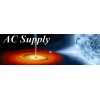Composite rocket engines are fascinating devices that combine simplicity and power, making them ideal for model rocketry enthusiasts. Whether you’re an educator looking to explain the mechanics of rocketry or someone who is simply curious about how these engines function, understanding the basics is essential. Let’s explore how a composite rocket engine works, highlighting the key components and the science behind them.
What Is a Composite Rocket Engine?
A composite rocket engine is a type of solid rocket engine that uses a blend of chemicals to produce thrust. Unlike traditional solid propellants that use a single substance, composite engines use a combination of fuel and an oxidizer in solid form, often bound together with a resin or rubber-like material. The primary advantage of this design is the more controlled burn and greater efficiency compared to simple solid propellant engines.
How the Fuel and Oxidizer Work Together
At the heart of any rocket engine is the combustion process. In a composite rocket engine, the fuel and oxidizer mix to create rapid combustion. The fuel, typically a rubbery compound, provides the energy for the reaction, while the oxidizer allows enough oxygen for the chemical process, even in the vacuum of space or high altitudes. When ignited, the fuel burns rapidly, producing hot gases that expand and are expelled from the rocket nozzle to generate thrust.
The Role of the Nozzle in Thrust Production
The nozzle in a composite rocket engine plays a crucial role in controlling the direction and speed of the escaping gases. As the fuel burns and creates hot gases, those gases are forced through the nozzle, which accelerates them to extremely high speeds. The shape of the nozzle helps the rocket achieve maximum thrust from the expanding gases, propelling the rocket into the air.
Why Composite Rocket Engines Are Popular in Model Rockets
Composite rocket engines have gained popularity in model rocketry due to their reliable performance and the ability to deliver consistent thrust. Unlike traditional black powder engines, which can sometimes produce inconsistent burns, composite engines offer a smoother, more controlled burn. This consistency makes them ideal for educators and hobbyists who need engines that provide a predictable performance.
Safety Considerations When Using Composite Engines
It’s essential to follow safety guidelines when operating a composite rocket engine. Always conduct launches in open areas away from buildings and trees, and have participants follow safety precautions. Composite rocket engines burn hotter than black powder engines, so students or hobbyists should wear protective gear and stand at a safe distance during launches.
Understanding how a composite rocket engine works is a rewarding experience for educators and students. By combining solid fuel with an oxidizer and using a carefully designed nozzle, composite engines deliver reliable thrust and efficient performance, making them a top choice for model rocket enthusiasts.
Whether you’re a seasoned rocketry expert or a beginner, composite engines offer the opportunity to explore science and technology in a fun and educational way. To get started, you can buy model rockets online from AC Supply. Check out our selection to find the right composite engine for your needs.


